Sourdough culture and tips
Who loves sourdough bread? I do, preferably a loaf that’s crusty, chewy and tangy.
While something of a beginner at sourdough baking, it’s not completely new to me. My mother made delicious English muffins using an overnight sourdough-leavened recipe – rolled and cut out like biscuits and baked (so to speak) in a skillet. Here’s a similar recipe for sourdough English muffins rendered with enthusiasm by blogger Cedar McKay.
Starter is a flour and water mix that’s home to friendly lactobacillus and yeast(s). It’s alive and needs periodic tending. My mother’s starter had a name: “Alistair” to honor Alistair Cooke’s contributions to (ahem! pun alert)…culture. Cooke produced “Letter from America” from 1946 – 2004 and hosted Masterpiece Theatre for 21 years (before that was re-branded as “Masterpiece“).
My own record on keeping sourdough starter alive is only so-so. I revisit the attempt with regularity but inevitably it gets neglected or dies when we take a trip. Once the flour settles into solid goo with odd-colored liquid floating on top…well, sometimes that can be revived. But often it seems best to chuck it and start anew.
After some spring travel, I think I’m home for the summer. So, even though July may not be the best season for baking, I am now a little over a week into brewing a new “wild caught” starter.
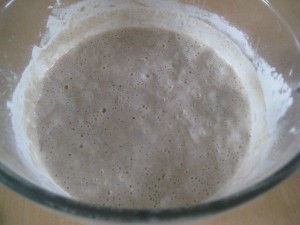
Sourdough starter is humble and unimpressive in appearance – terrific in flavor. (photo by Lucy Martin)
The best, or easiest, road to good starter is to get some from an established batch with a nice flavor. There are also plenty of ways to buy starter culture by mail. I went the home-made route. I have to say it wasn’t going all that well until I threw in some rye flour. That is, it all had a nice smell and such, but it would not “grow”. You want something that will double in size after each feeding.
There are tons of websites with info on this topic. While some basics are standard in sourdough craft, opinions on what makes the best starter – or keeps it going well – sometimes vary.
Case in point: this website – “Sourdough Home” – says catching the right bacteria out of the air is something of a myth. They say building off an established starter is best. But if you must establish your own, these authors believe the real source of the right stuff is the best possible fresh whole wheat or rye flour.
The bubbly blob does need care and feeding. “A starter at room temperature should be fed no less than twice a day” according to the page called “starting a starter Mike’s old way“. If you do this for a full week, as this method recommends, you will generate far more than the container can hold. Eventually, the starter can be stored in the fridge and survive on less-frequent feeding.
My first loaves off this new starter were supplemented by some conventional yeast and were shaped using the no-knead technique many have championed in recent years. (i.e., Skip the 2nd, shaping knead. Just coat the dough with flour and go right to the desired shape with a few outer pulls, basically. Let it rise, slash the top and bake in a hot steamy oven.) It’s easy and seems to work at least as well as the more time-consuming double knead.
That batch was delicious, but the loaf was somewhat flat. With the flavor on track my next task is to somehow boost the height. (Yes, using a bread loaf pan will do that, but at the cost of extra crust, my favorite part.)
To get the type of crust I like best, it’s apparently important to get the oven hot and steamy. There are various techniques to accomplish that, from a variety of conventional methods, to the Rube Goldberg side of the spectrum with a pressure cooker injecting steam into an oven exhaust output. (Go ahead, see this for yourself. Wild.)
I don’t plan to mess around with porting pressure cooker steam hither and yon.
Regrettably, I may have ruined one of my bedrock aluminum pans by heating it in a hot oven and then adding the water. Steam bakers, help me out here. Must the pan be empty and super hot before adding the water? If so, what do you use that won’t crack, buckle or discolor under such a rude temperature assault?
I am sure, I know, there are experienced sourdough bakers out there. So, if you are willing, do please share your tips on starting starter, and keeping it healthy. What you do to over-winter starter, or keep it alive while you travel?
Thanks very much and happy baking to all – now, or when it gets nice and cool again.
Tags: Alistair Cooke, baking, cooking, Letter from America, Masterpiece Theatre, sourdough bread, sourdough starter





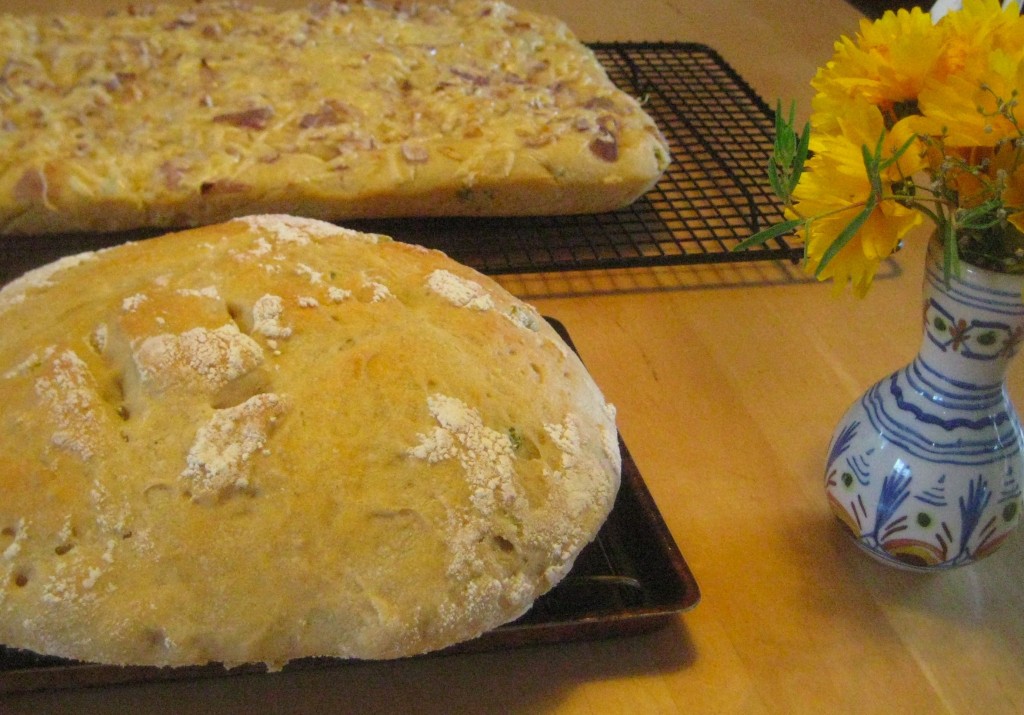
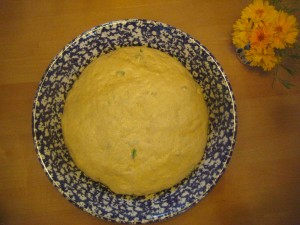
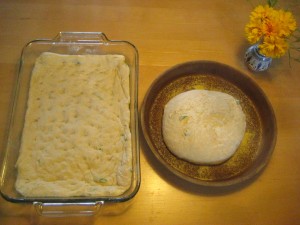
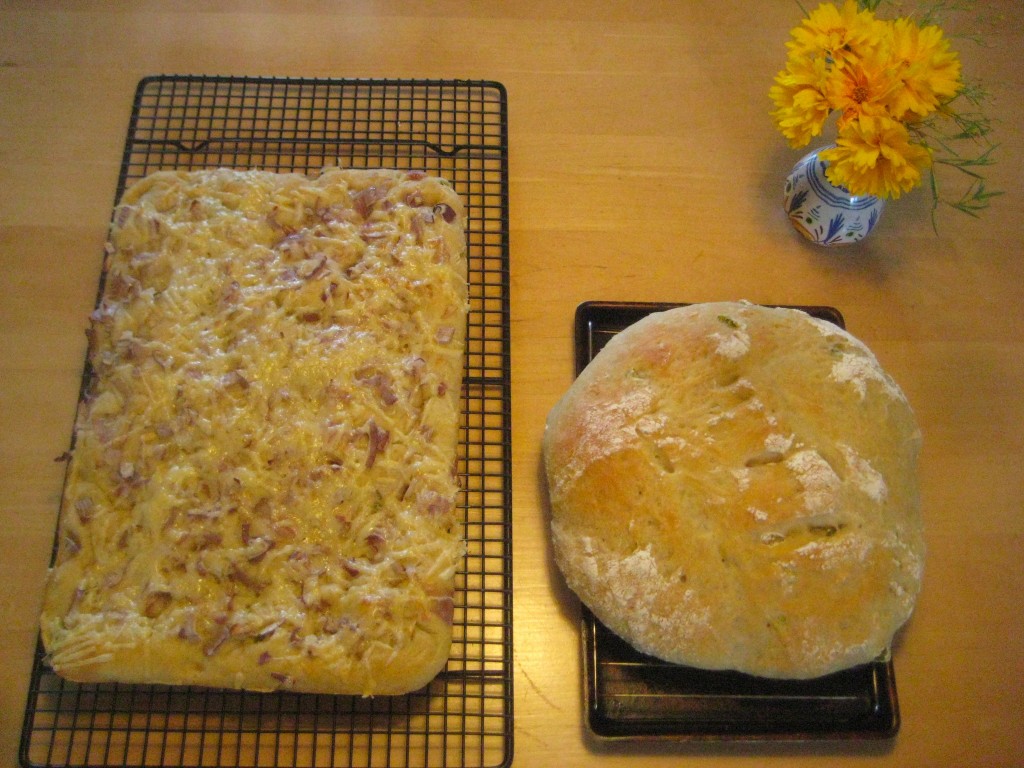



Lucy – Nice photos. I make sourdough bread every other week and freeze the loaves. Today is baking day (hot unfortunately) and I thought I would respond while the bread is in the oven. I keep the starter (1/2 cup) in the refrigerator between baking. It can probably last a month or two there and still be revived, but usually if I am not going to bake for a while, I “passage” the starter by tossing out half and adding another half of water and flour – maybe for a day or two, twice a day. I also passage it twice before making bread. I got the starter originally from “Carl” online. They say, …; If you want to make your own starter, you need to get it so you can passage it twice a day for a month before it is reliable. Thats a lot of work especially when you can get really good cultures sent to you in the mail.
A whole month? Yeah, that’s a lot of time and flour.
The site I was reading suggested a week would suffice.
You are making mail-order culture sound better and better.
On the other hand, mine will be two weeks strong this Wednesday. Maybe I’ll stay the course.
Thanks for sharing your expertise Peter. It is heartening to hear how others make it work in a reliable way.